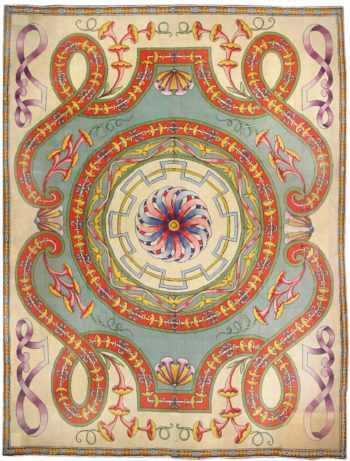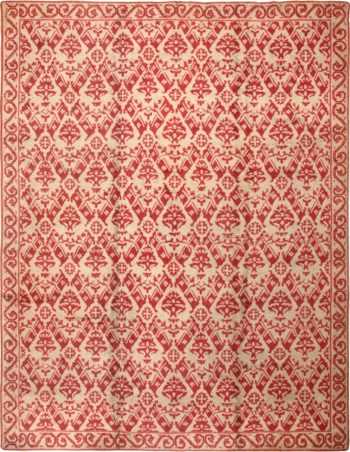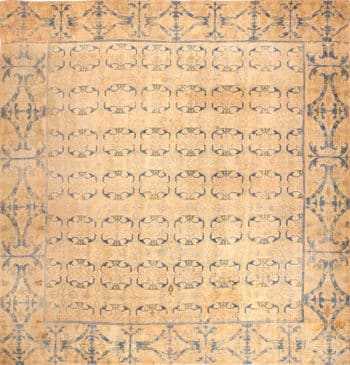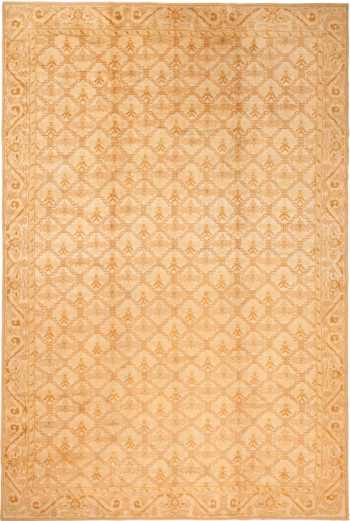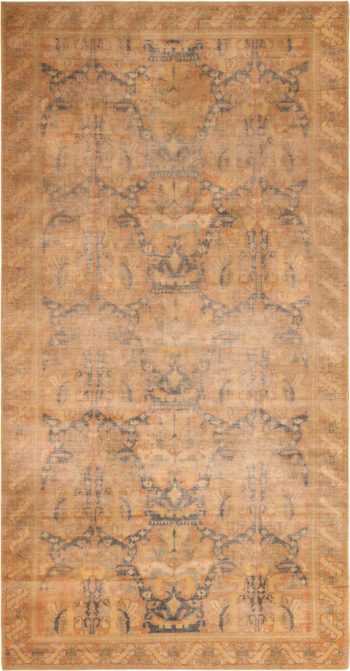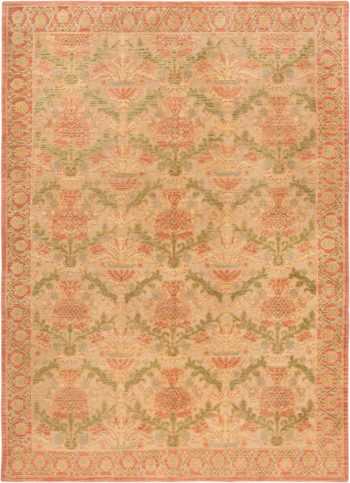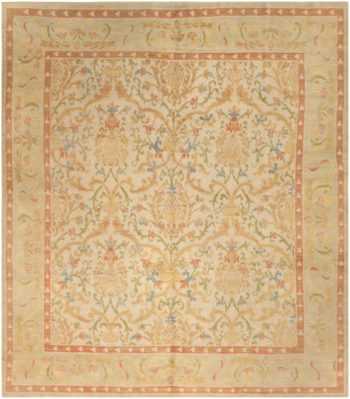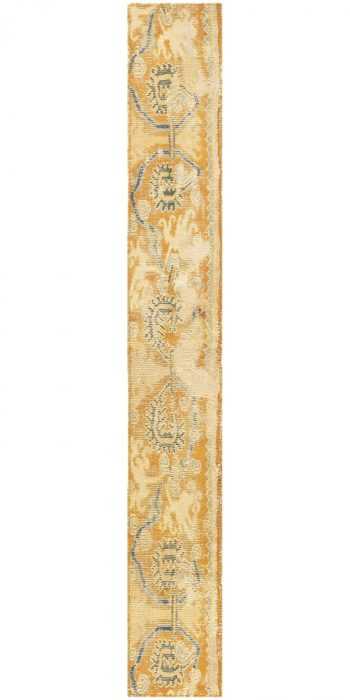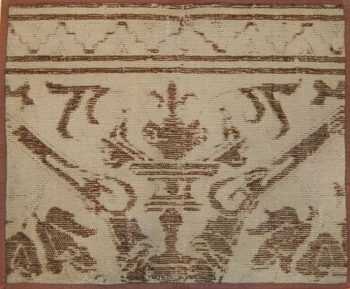Spanish Rugs
Antique Spanish area rugs:
Beautiful Oversized Spanish Art Deco Design Carpet 50065
$220,000.00Size: 20 ft 4 in x 28 ft 2 in (6.2 m x 8.59 m)Large Green Antique Spanish Savonnerie Carpet 49845
$54,000.00Size: 15 ft 6 in x 19 ft (4.72 m x 5.79 m)Beautiful Large Size Allover Design Antique Moorish Style Spanish Rug 70408
$28,000.00Size: 11 ft 5 in x 17 ft 10 in (3.48 m x 5.44 m)Beautiful Large Size Vintage Spanish Rug 50549
$26,000.00Size: 13 ft 10 in x 17 ft 6 in (4.22 m x 5.33 m)Collectible Rare Large Antique 16th Century Allover Spanish Alcaraz Early Rug 70154
Size: 16 ft x 17 ft (4.88 m x 5.18 m)Decorative Large Antique Spanish Rug 50581
$18,500.00Size: 9 ft 7 in x 15 ft 7 in (2.92 m x 4.75 m)Magnificent Vintage Spanish Rug 50548
$8,900.00Size: 10 ft 5 in x 15 ft (3.17 m x 4.57 m)Antique Spanish Cuenca Rug 71431
$28,500.00Size: 7 ft 4 in x 14 ft (2.24 m x 4.27 m)Decorative Room Size Antique Spanish Carpet 2678
$16,500.00Size: 9 ft 3 in x 12 ft 3 in (2.82 m x 3.73 m)Vintage Lattice Pattern Spanish Area Rug 70263
$12,000.00Size: 8 ft 2 in x 11 ft 6 in (2.49 m x 3.51 m)Vintage Soft Color Spanish Area Rug 46975
$14,000.00Size: 8 ft x 9 ft 3 in (2.44 m x 2.82 m)16th Century Antique Spanish Cuenca Fragment 3432
$1,450.00Size: 2 ft x 6 ft 2 in (0.61 m x 1.88 m)Rare Collectible Early Antique 16th Century Spanish Alcaraz Carpet Fragment 3430
$750.00Size: 1 ft 6 in x 1 ft 11 in (0.46 m x 0.58 m)
Learn More About Antique Spanish Area Rugs
Although Spain is not generally thought of as a rug producing region, Spanish rugs represent the most venerable and honored tradition of rug production in Europe, going back to the time when much of Spain was part of the Islamic world. Still, the rugs woven in Spain were not Moorish products; native Spanish weavers had already learned the technique of making rugs by the fourteenth century, and they have continued to do so up to the twentieth century.
The antique Spanish rugs have a weave like no other pile rugs. These magnificent Spanish carpets are truly knotted, not looped, in staggered rather than superimposed rows. Their coloration has always been soft with dominant ivory grounds and pastel greens and yellows.
Although some early antique Spanish rugs imitated the designs and patterns of the antique Ottoman weavings, they soon developed a distinctive, uniquely Iberian or European style of vine scroll ornament. Early Spanish rug are highly desirable and coveted by collectors. This is contrast to the nineteenth and twentieth century Spanish made rugs which are sought after by consumers because they make excellent room size decorative rugs for many different home decorating aesthetics.
During the Islamic occupation, Spain was the first country in medieval Europe to make knotted pile rugs. Under the Islamic rules, the carpet weaving industry flourished from the 8th century through most of the 15th century.
The earliest existing Spanish carpets were woven during the 15th century and depict a multicultural lineage. Christian, Jewish, Muslim Arab and Berber populations co-existed for eight centuries and their combined artistic influence is reflected in their designs. By the 11th century, rugs from Spain were exported to the Orient, England and France.
Muslim and Christian princes and their courts admired and collected these magnificent antique rugs. By the 17th century, Spain’s economic depression coupled with the expulsion of Jews and Muslim artisans left the country artistically bankrupt. It was only with the help of rich patrons and the support of the monarchy, that the rug industry survived.
As a result, Spanish rug weaving followed the trends of France and England. They also followed the influences of the originality of diversity which gave way to a more Western and far more decorative approach.
What makes Spanish rugs so popular?
Spanish rugs have gained popularity for several reasons, rooted in the country’s rich history, cultural influences, and unique design sensibilities.
Here are some factors that contribute to the popularity of Spanish rugs:
- Heritage and Tradition: Spain has a long history of textile production and craftsmanship, dating back centuries. The tradition of weaving and rug making has been passed down through generations, resulting in a deep-rooted heritage of quality craftsmanship.
- Cultural Diversity: Spain’s history is characterized by a blend of various cultural influences, including Moorish, Arabic, Roman, and Mediterranean. These diverse influences have contributed to a unique design aesthetic that often incorporates intricate geometric patterns, vibrant colors, and a mix of traditional and contemporary styles.
- Artistic Expression: Spanish culture places a strong emphasis on artistic expression and creativity. This is reflected in the design of rugs, where artisans often create intricate and visually stunning patterns that draw inspiration from architecture, nature, and local traditions.
- Use of Natural Materials: Spanish rugs often utilize high-quality natural materials, such as wool and silk, which contribute to the durability and luxurious feel of the rugs. The use of natural dyes can also create a rich and varied color palette that adds to the appeal of the rugs.
- Innovation and Modernization: While honoring traditional techniques, Spanish rug designers and manufacturers also embrace innovation and modern design trends. This combination of tradition and contemporary design has helped Spanish rugs appeal to a wide range of consumers with diverse tastes.
- Regional Diversity: Different regions of Spain have their own distinct rug-making traditions and styles. For example, the region of Andalusia is known for its Moorish-influenced designs, while Catalonia often features more geometric and modern patterns. This regional diversity offers a wide range of options for consumers.
- Collaborations and Designers: Spanish rug manufacturers have collaborated with renowned designers and artists, both domestic and international, to create unique and limited-edition rug collections. These collaborations infuse the rugs with fresh perspectives and innovative designs.
- Global Recognition: Spanish rugs have gained recognition on the international stage, attracting buyers and collectors from around the world. This global exposure has contributed to the popularity of Spanish rugs in the market.
- Attention to Detail: Spanish rug artisans are known for their attention to detail and commitment to producing high-quality, handcrafted rugs. This dedication to quality and craftsmanship resonates with consumers who appreciate the value of well-made products.
Overall, the popularity of Spanish rugs can be attributed to their rich cultural heritage, artistic expression, diverse design influences, use of quality materials, and the ability to blend tradition with innovation.
These factors combine to create area rugs that are not only functional but also works of art that enhance interior spaces.

